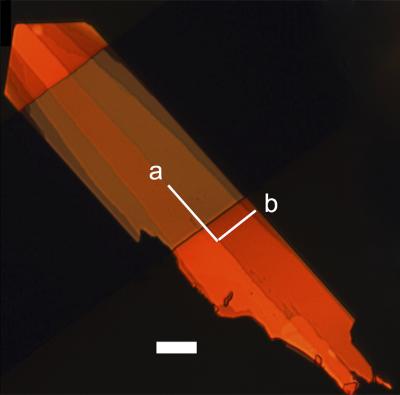Scientists from the universities of Harvard and Stanford have developed a novel organic semiconductor material that is 30 folds quicker than amorphous silicon currently utilized for the production of liquid crystal displays for computer monitors and flat panel televisions.
 A single crystal of the new organic semiconductor material
A single crystal of the new organic semiconductor material
The scientists also tried a computational predictive method to study and develop the most prospective candidate materials by eliminating the process of synthesizing a huge number of candidate materials. They utilized DNTT as the preparatory material and then considered numerous compounds whose electrical and chemical properties would improve the performance of DNTT when they were linked. They finalized seven prospective candidate materials.
The Harvard team selected two candidate materials out of the seven candidates by utilizing the anticipated structural and chemical properties of the altered materials. During the study, the team observed that one of the two candidate materials quickly passed the charge between its molecules and its speed was twice that of the parent material.
Zhenan Bao, one of the researchers, stated that to synthesize and classify all the seven candidate materials would have required several years. With this method, the team was able to select the most prospective candidate material with the superior performance as calculated by theory, he said. The scientists believe that their predictive method would pave the way to other scientists researching to identify an enhanced material for organic semiconductors. They are willing to employ their approach for the development of ultrahigh-efficacy material for the production of organic solar cells.